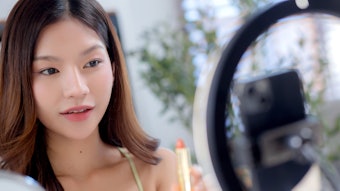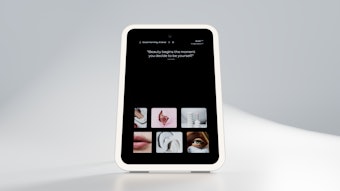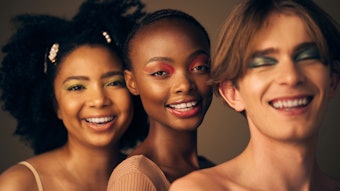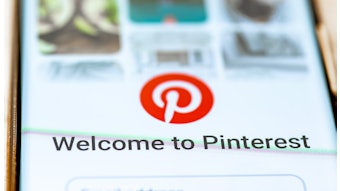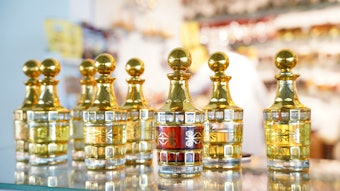
Read this article in its entirety in the October 2020 digital edition. . .
Emotions can run high in the case of a visible chronic skin disease such as Acne vulgaris. This condition can be improved by dermatological treatments and by personal care products, which address mild forms including comedones (blackheads), spots and blemishes through daily skin care routines.
Acne is a common inflammatory skin disease that manifests more often in the face, negatively affecting appearance. It has a wide-ranging impact on the psychosocial functioning of individuals affected by it, making it difficult to differentiate whether it is a cause or effect due to the mental strain it imposes. Acne is linked to depression, anxiety, social phobia, stress1 and disability, and is more prevalent in those deemed as having a distressed or “type D” personality2—what medical psychology refers to as individuals having a tendency toward negative affectivity, such as worry, irritability and gloom; and social inhibition, e.g., a lack of self-assurance. Social phobia due to acne can even be associated with disability at work, although a higher education level may ameliorate the disability felt in family life.3
Negative Self-perception
Acne leaves both physical and emotional scars. Having acne also causes a stronger attention bias for acne in others. In fact, the gap in perceived attractiveness between faces with acne and clear skin is greater for acne sufferers—whose attention is also fixated longer on facial areas with acne lesions, compared with control subjects.4
Female patients are more likely to develop anxiety and depression due to acne.5 Furthermore, acne causes greater distress in adult women than in teenagers; adult women mentally strained by acne experience increased stress in professional and private life, which increases anxiety, affects sleep quality and triggers higher levels of psychosocial anguish with a likelihood of sequelae such as skin picking, scarring and hyperpigmentation.6 In girls, acne has a more direct effect on self-esteem, self-confidence and identity.7
Outsider Judgment
In relation, people often judge others based on physical appearances. Evolutionary fear of a contagious disease may underpin such rejection and avoidance. Since acne is a visible condition, those afflicted unconsciously feel rejection and judgment, across cultures and continents. Particularly at a younger age, when children more often have shy characteristics, even moderate acne may be a potential barrier to social relationships. This is not simply due to social anxiety but because one may meet people with possible prejudices.
Studies have shown that young people with clear skin are perceived to be more mature, with a higher potential for friendship, attractiveness and an overall positive personality than people with moderate acne.8 One survey conducted in Malaysia asked subjects to view images of faces having acneic or clear skin. Two-thirds of respondents themselves were either afflicted or had been afflicted by acne. In viewing photos of acne-afflicted skin, the first thing noticed by 76.1% of respondents was the skin, compared with just 24.8% when viewing clear skin.
Acne sufferers also were perceived as being unattractive, sad, lonely and distant, unhealthy, disheveled and shy, and even presumed to have a lower education level and poorer leadership qualities. In contrast, those with clear skin were perceived to be healthier, confident, happy, attractive, successful and intelligent. Survey participants were more willing to engage socially with, hire or vote for people with clear skin rather than those with acne as well. These strong negative perceptions and psychological judgments of those affected by acne prevail and are likely to affect social life and prospects for employment and career opportunities.9
Across the U.S., U.K., Japan, Germany, France and Brazil, similar negative results are observed in perceptions of atrophic scarring of varying severities due to inflammatory acne. In one study, participants again viewed photos of acne-scarred or clear skin. Among the participants, one-third had facial acne scars themselves. Upon viewing images of scarred skin, 41% of subjects noticed the skin first whereas in images of clear skin, only 8% noticed the skin first. Similar to previous results, people with acne scars were again considered less: attractive, confident, happy, healthy and successful; the were also more likely to be perceived as insecure and shy compared with those having clear skin.
The significance varied according to the acne and scar status of the respondent; however, skin care was cited as the habit most in need of improvement when viewing pictures with scars in contrast to those with clear skin. Acne scarring implied less of a promising future and the majority of respondents reported willingness to pay money to eradicate the scars.10
. . .Read more in the October 2020 digital edition. . .
References
- Mikhael, N.W., Hamed, A.M., Mansour, A.I. and Abdelrahman, E.S. (2019) Serum levels of brain-derived neurotrophic factor in patients with acne vulgaris. J Cosmet Dermatol 18(6) 1998-2003. doi:10.1111/jocd.12940
- Sereflican, B., Tuman, T.C., Tuman, B.A. and Parlak, A.H. (2019) Type D personality, anxiety sensitivity, social anxiety, and disability in patients with acne: a cross-sectional controlled study. Postepy Dermatol Alergol 36(1) 51-57. doi:10.5114/ada.2019.82824
- Bez, Y., Yesilova, Y., Kaya, M.C. and Sir, A. (2011) High social phobia frequency and related disability in patients with acne vulgaris. Eur J Dermatol 21(5) 756-760. doi:10.1684/ejd.2011.1418
- Lee, I.S., Lee, A.R., Lee, H., et al. (2014) Psychological distress and attentional bias toward acne lesions in patients with acne. Psychol Health Med 19(6) 680-686. doi:10.1080/13548506.2014.880493
- Skroza, N., Tolino, E., Proietti, I., et al. (2016) Women and acne: any difference from males? A review of the literature. G Ital Dermatol Venereol 151(1) 87-92.
- Dreno, B., Bagatin, E., Blume-Peytavi, U., Rocha, M. and Gollnick, H. (2018). Female type of adult acne: Physiological and psychological considerations and management. J Dtsch Dermatol Ges 16(10) 1185-1194. doi:10.1111/ddg.13664
- Nguyen, C.M., Koo, J., Cordoro, K.M. (2016) Psychodermatologic Effects of atopic dermatitis and acne: A review on self-esteem and identity. Pediatr Dermatol 33(2) 129-135. doi:10.1111/pde.12802
- Timms, R.M. (2013) Moderate acne as a potential barrier to social relationships: myth or reality? Psychol Health Med 18(3) 310-320. doi:10.1080/13548506.2012.726363
- Loh, K.C., Chan, L.C. and Phang, L.F. (2020) Perceptions and psychosocial judgement of patients with acne vulgaris. Med J Malaysia 75(1) 18-23.
- Dréno, B., Tan, J., Kang, S., et al. (2016) How people with facial acne scars are perceived in society: An online survey. Dermatol Ther (Heidelb) 6(2) 207-218. doi:10.1007/s13555-016-0113-x

